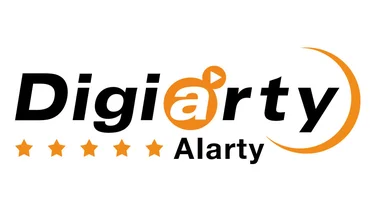To help us provide you with free impartial advice, we may earn a commission if you buy through links on our site. Learn more

- Great task management
- Lots of powerful features
- Excellent free plan
- A little on the pricey side
- Team plan is capped at 25 users
- Can still be a bit old-school in spots
Wrike has been around for a long time and has been through several iterations. Its latest, though, is definitely its best. It offers fantastic navigation and a great overview for both workers and managers alike. If youre looking for a powerful project management software, Wrike deserves your attention.
Wrike review: What do you get for the money?
Wrike offers five plans that scale according to your business needs. The first tier, which is free, is basic but solid. It has just a kanban board and a table view, but youd be surprised at how much you can get done with only those features. Also, as an extra bonus, you get unlimited users on that plan, making it one of the best of its kind you could argue its even better than the free plan offered by Trello or Asana.
The next step is the Team plan, which costs about £8 per user, per month, for a maximum of 25 users. If you have fewer than 25 people in your team, the Team plan is a solid buy. It may be a few bob more expensive than monday.coms equivalent plan, to name but one, but it offers a huge number of features, in excess of any of its competitors. That may be worth the extra expense.
However, if you have more than 25 team members, you will have to sign up to the Business plan, which at about £22 per month, per user is a big leap. While you do get some pretty nifty extras for the money, its still a large expense. As for the final two plans, Enterprise and Pinnacle, these mostly focus on extra security as well as budgeting tools; the price for these is something you will need to negotiate with Wrike.
Overall, the Team plan offers great value, and if you like Wrike and have fewer than 25 team members, its definitely worth checking out. The Business plan is more difficult to place, however. If youre a large team with simple needs, Wrike may not be a good choice simply because it caps the Team plan at 25 users; theres a chance some larger companies wont need all the bells and whistles offered by the Business plan. In that case, monday.com or even Jira may be a better choice.
Wrike review: Whats it like to use?
Wrike is an absolute pleasure to use. Its been a competent project management tool for all the years it has existed; but, until recently, it left a lot to be desired in the usability department. For one, the interface was pretty dull, with lots of bleak browns and greys. For another, the navigation was pretty old-school, with all the benefits and drawbacks that come with large file trees.
No more, though: Wrike actually comes in colour now, and it looks good. The changes arent just chromatic, either, with navigation smoothed out and a good number of quality-of-life improvements. Wrike no longer just gets the job done; it actually makes it a pleasant experience.

At Wrikes core is the table view, which is really just a huge list of all your tasks at a glance. You can add columns to the table to help you further filter out tasks to your liking, or remove a few to keep things simple. Whatever you do, you will likely appreciate how easy Wrike makes it to keep track of everything.
One thing that Wrike does exceptionally well, is the way in which it lets you keep track of sub-tasks. Other project management software doesnt always do such a great job, either hiding them behind menus or treating them like full tasks. Wrike solves this issue by just letting you fold sub-tasks out from full ones, or hide them behind an icon. We havent seen it done better.

This experience extends to the other project views, too. The board is one of the best out there giving even Trello a run for its money. You can collapse columns you dont need, and cards have just enough information on them without becoming overwhelming.
Wrike is also one of the few project management programs that has a decent Gantt chart. You can set dependencies in the other views sub-tasks are automatically dependencies and then they reflect exactly as you set them in the actual chart. Although Wrike doesnt quite have the level of flexibility that dedicated Gantt tools such as TeamGantt offer, it still does a fine job.

These three views form the basis of Wrike, and for most teams theyll probably be enough to keep things running. The table and board are included in the free plan, while Gantt charts are included in the Team plan and up.
Wrike review: Are there other useful features?
Wrike is more than just some views, of course. It offers all kinds of interesting extras. For one, each user gets a decent allowance of storage space, starting with 2GB at the Teams level. You also get an increasing number of automations as you scale per tier. These work both within Wrike as well as with any linked programs, saving you plenty of time.
At higher tiers, you also get to work on video and image files, advanced reporting functions, as well as the ability to keep an eye on users individual productivity. With the Business plan and above, Wrike becomes a lot more than just a task management tool; it could become an essential aid to running your business. That said, Asanas advanced functions are a little better for a slightly lower price, so you may want to check that out before making a decision.
Wrike review: Should I sign up?
Between the views and the other features, Wrike offers pretty much everything you need to plan tasks and keep people working. Although not entirely without its faults it remains a little old-school in places its up there among the very best project management software. All of its plans come with a free 14-day trial, and we recommend you give it a whirl.






